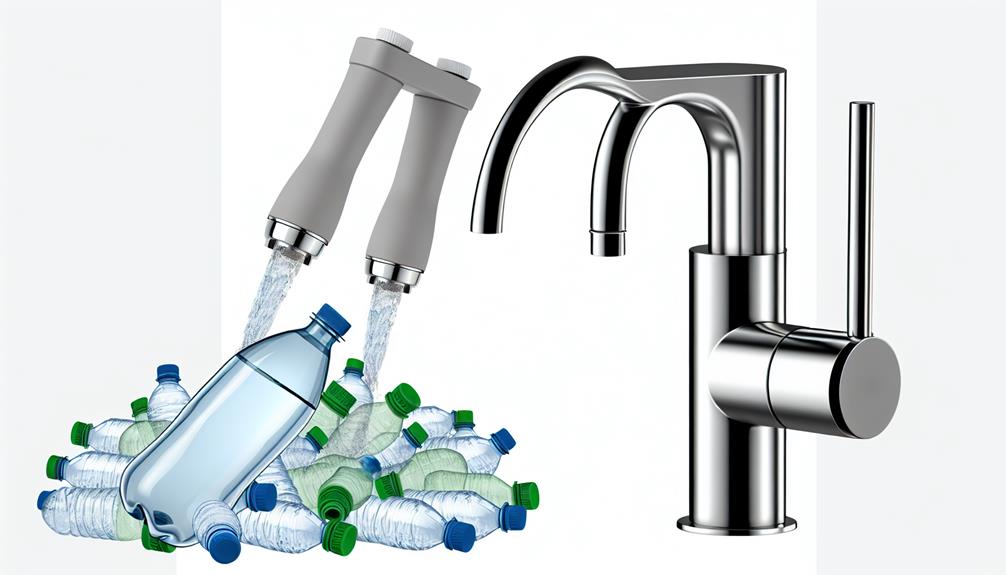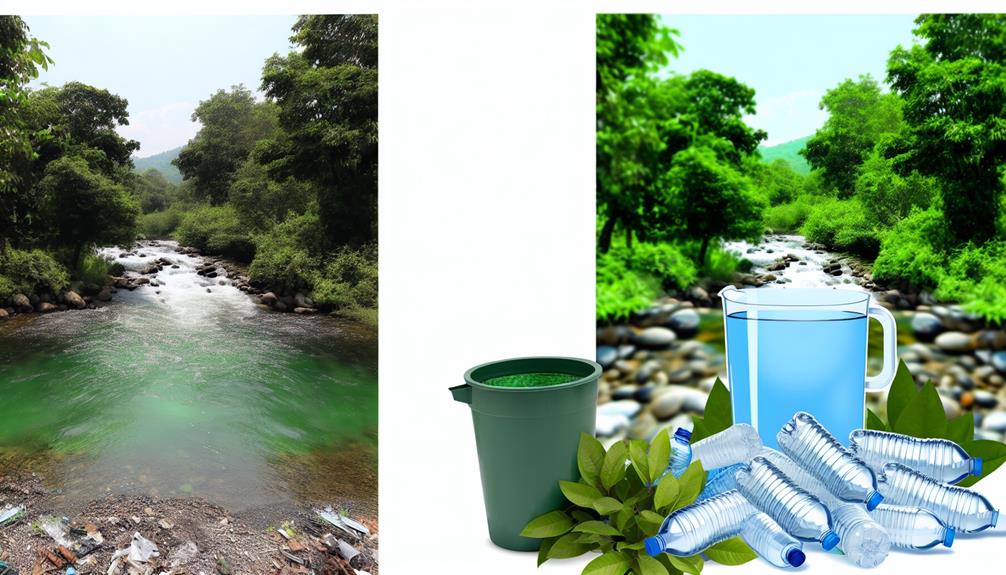You might think that the environmental impact of producing water filters is negligible compared to other industries, but it's a concern that can't be washed away so easily.
As someone invested in the future of our planet, you understand that every effort to reduce carbon emissions counts, and the manufacturing sector is no exception.
Let's consider the steps you can take to minimize the carbon footprint in water filter production. From sourcing sustainable materials to revamping the energy sources that power production lines, there's a well of opportunity to make a change.
And while you're weighing these options, there's one more factor that could tip the scales—a strategy that could not only benefit the environment but also reduce costs in the long run.
Stay with me, and together we'll explore this intriguing possibility.
Assessing Production Emissions
To effectively reduce the carbon footprint of water filter production, it's essential to rigorously assess the emissions generated at each stage of the manufacturing process. This meticulous evaluation encompasses the energy consumption and environmental impact of producing water filtration systems, including the carbon dioxide emitted. You'll need to scrutinize the raw materials selected, manufacturing techniques employed, and the logistics of production and transportation to pinpoint where emissions are most intensive.
Utilizing Life Cycle Assessment (LCA) is indispensable for such a comprehensive analysis. This tool examines the eco-footprint from raw material extraction through to the end-of-life disposal of the filters, spotlighting opportunities for minimizing reliance on fossil fuels and enhancing efficient filtration. By identifying emission hotspots, you can target areas for improvement, such as energy efficiency and material optimization.
Your commitment to this process doesn't end with a one-time assessment. Continuous monitoring and regular evaluations are critical for setting tangible sustainability targets. These benchmarks guide the development of eco-friendly water filter options that contribute to sustainable water practices.
Through this approach, you'll not only craft an environmentally responsible product but also set a precedent for industry-wide adoption of greener manufacturing standards.
Sustainable Material Selection
Building on the foundation of rigorous emissions assessment, selecting sustainable materials becomes the next critical step in diminishing the carbon footprint of water filter production. You must focus on materials that not only serve the functional requirements of sediment filters but also align with environmentally friendly practices. Opting for filters made from sustainable resources directly contributes to a lower carbon output, ensuring that your use of these products doesn't exacerbate environmental issues.
Consider filters with long-lasting designs that minimize material use and waste—this approach aids in reducing the frequency with which filters need to be replaced, thereby conserving resources and limiting carbon footprints. Prioritizing filters that curtail plastic waste is also paramount. You're not just investing in a product; you're supporting a more eco-friendly solution.
Assessing a filter's efficiency in contaminant removal is equally significant from a sustainability perspective. Efficient filters require less frequent changes and, hence, lead to sustainable water treatment practices by lessening material turnover.
Energy-Efficient Manufacturing Processes
Embracing energy-efficient manufacturing processes is crucial for reducing the environmental impact and energy consumption associated with producing water filters. When you consider the implications of conventional manufacturing on our planet, the shift toward more sustainable practices becomes not only logical but necessary.
Here are the steps that make a significant difference:
- Automating Filtration Processes: By using advanced automation and control systems, water filter production can be more precise, reducing waste and energy use.
- Implementing Reverse Osmosis with Energy Recovery: Modern water treatment systems, including Reverse Osmosis, now incorporate energy recovery devices, drastically cutting energy demands.
- Adopting Renewable Energy Sources: Solar, wind, or hydro-powered energy solutions for manufacturing water filters not only lower carbon emissions but also ensure a greener supply chain.
- Optimizing Equipment Efficiency: Regular maintenance and updates to the latest energy-saving technologies keep the production line for water filter systems at peak performance, minimizing unnecessary energy expenditure.
Each step in this list contributes to a lower carbon footprint for using water filters. Energy-efficient manufacturing processes aren't just about meeting environmental regulations; they're about ensuring a cleaner world where water treatment doesn't come at the expense of our ecosystem's health.
Waste Reduction Strategies
Implementing waste reduction strategies in water filter production is essential for minimizing environmental impact and promoting sustainable consumption practices. By focusing on the manufacture of water filters that help reduce plastic waste, you contribute to a cycle of responsible consumption. Opting for filters made from sustainable materials not only curbs waste generation but also ensures that the end product supports water purification without adding to pollution.
An eco-conscious approach involves selecting materials that are either biodegradable or easily recyclable, thereby reducing the waste footprint of water filter systems. Encouraging the use of reusable water containers with replaceable filters can greatly diminish the reliance on single-use plastics, directly cutting down the volume of litter that often ends up in landfills or oceans.
As a producer, you're also tasked with improving the longevity and efficiency of water filters to ensure that users don't have to replace them frequently. This move not only conserves resources but also reduces waste associated with water purification products.
Lifecycle Analysis and Improvement
Assessing the environmental impact of water filters throughout their entire lifecycle reveals critical opportunities to reduce their carbon footprint. By conducting a thorough lifecycle analysis, you can understand the sustainability of these systems and implement improvements that aren't just eco-conscious but are also technically and economically viable.
Here are key areas where lifecycle analysis can lead to impactful changes:
- Raw Material Sourcing: Opt for materials that lessen environmental strain from extraction to processing.
- Manufacturing Process: Shift to using energy-efficient methods to assemble water filters, including countertop water filters.
- Usage Efficiency: Ensure that water filters operate with minimal energy, reducing harmful emissions during their service life.
- End-of-Life Management: Develop and promote the recycling of water filter components to prevent waste from contaminating water sources.
Each step in this process can influence how much a water filter can help in providing safe, filtered water while also protecting the planet. From the choice of materials to the purification systems' design, striving for sustainability is crucial. You're not just investing in a product but in a commitment to preserve natural resources.

